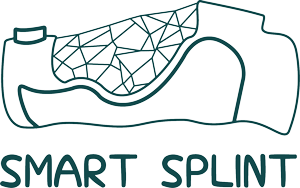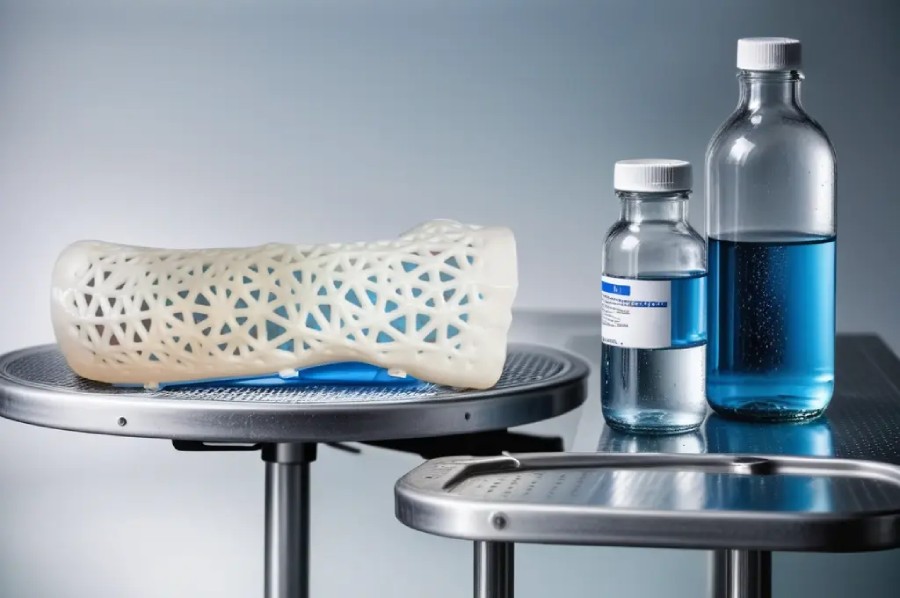
Splint Removal and the Transition from Immobilization
Introduction
After a period of immobilization in a splint or cast, the next phase involves carefully transitioning the injured area from its protected state to regain function. Removing immobilization signals the start of reintroducing movement and loading to the area. This transition period requires planning and careful progression to optimize recovery outcomes and avoid potential setbacks.
Immobilization provides the critical initial function of rest, protection, and stabilization to allow healing to begin for many musculoskeletal injuries. Whether due to fractures, ligament tears, dislocations, or other traumatic injuries, keeping the injured site motionless allows tissues to begin repairing and regenerating. Splinting and casting are common immobilization techniques that effectively manage injuries in this acute phase.
However, prolonged immobilization also poses risks such as stiffness, weakness, and atrophy of surrounding muscles if not appropriately addressed. Prolonged immobilization can also result in soft tissue adhesions that prevent a full, pain-free range of motion. Thus, immobilized areas must be gradually transitioned over time as healing allows.
Transitioning too quickly risks re-injury by overloading vulnerable, partially healed tissues. Yet transitioning too slowly fails to restore function fully and efficiently. Careful planning is required to ensure progression occurs at a tailored, individualized pace determined by objective exam findings, imaging results, and the overall condition and trajectory of healing for each unique injury.
A systematic, guided approach to transitioning from immobilization mitigates risks while optimizing recovery. The aim is to safely regain full, functional use of the injured area without complication. This essay will explore key factors involved in navigating this important phase of rehabilitation successfully.
Timing of Splint Removal
Here is an expanded version of this paragraph:
Determining the appropriate time for splint or cast removal requires evaluating multiple factors related to the injury’s healing progress. For fractures in particular, key indicators typically involve radiographic evidence of bridging callus formation between bone fragments, which signifies structural bone healing is well underway. Additional common clinical signs suggesting readiness include decreased pain, tenderness, and swelling at the injury site. The patient should also be able to gently move and bear some weight on the injured area without significant discomfort.
Premature removal of immobilization runs the risk of disrupting the healing process by subjecting partially healed bone and soft tissues to stresses they are not yet prepared to tolerate. This could lead to complications such as delayed- or non-union of fractures. Conversely, prolonging immobilization past the point where healing allows for progressive loading gradually introduces its own set of problems. Extended immobilization can lead to avoidable stiffness, weakness from disuse, and extended recovery time necessitated by deconditioning of surrounding muscles and connective tissues.
By meticulously evaluating both radiographic findings and clinical exam signs and symptoms at scheduled follow-up appointments, a medical professional can gain an understanding of the injury’s maturation state and ensure immobilization is removed according to the stage of healing indicated. Close monitoring during this transition protects against potential issues stemming from either overly early or overly delayed transition from a splinted or casted state.
Regaining Range of Motion
With the splint or cast now removed, regaining the range of motion becomes the primary focus of rehabilitation during this transitional phase. Initial exercises concentrate solely on gentle, pain-free active and passive movements conducted within the injury’s functional baseline. Small amplitude motions in all planes work to slowly redevelop joint stiffness that may have occurred from immobilization.
Close monitoring of symptoms guides progression appropriately based on patient feedback. Any pain, discomfort, tenderness or tension reported helps clinicians determine if movements should remain limited or progressed cautiously. Range is also assessed using goniometric measurements to objectively quantify gains over time.
Assistive devices like knee braces, ankle supports or slings may still provide needed stabilization as range improves, especially in the early stages when healing tissues have less resilience. Aggressive motions are strictly avoided to prevent overstressing partially healed structures.
Swelling levels are carefully watched, and treatment such as ice, compression or elevation is employed if necessary to manage inflammation appropriately during this vulnerable stage. Gradual range gains supervised by a physical or occupational therapist optimize regaining mobility safely aligned with the injury’s tolerance.
Addressing Soft Tissue Adhesions
When joints, muscles, and connective tissues have been immobilized for an extended period, it leaves them susceptible to developing soft tissue adhesions and contractures over time. The prolonged immobilization can result in the formation of restrictive scar tissue between adjacent structures that should normally glide freely.
Addressing these issues early on is important for restoring a full, painless range of motion and preventing long-lasting limitations. Manual therapy techniques such as joint mobilizations, muscle energy techniques, and gentle soft tissue massage help break up any adhesions that have formed beneath the skin surface. This allows inflamed and tight tissues to regain their natural mobility and extensibility.
Complementary modalities like controlled stretching within comfortable end ranges and protective bracing are also employed. Stretching maintains the gains achieved in manual therapy sessions while bracing supports vulnerable tissues as movement tolerance grows. Application of modalities in a progressive, supervised rehabilitation plan works to both restore normal movement patterns and protect against new adhesions redevelopment as loading levels gradually increase.
Vigilantly managing soft tissue restrictions from the start of transition reduces the risk of long-term stiffness or pain developing if wounds are left untreated. A multimodal approach optimized for each patient’s unique injury and mobility status promotes full functional recovery over time.
Progressing Activity Levels
Once adequate mobility and pain relief have been established through successive therapy sessions, the next stage involves carefully progressing activity levels and graduated functional exercises. As the range of motion increases, therapeutic movements can safely incorporate additional cardinal planes of flexion, extension, abduction, and rotation.
Low-impact activities are introduced in stages to replace mandatory complete rest. Tested activities may include balancing, selective lower extremity weight shifting, or upper body-only motions depending on the injury. Protective bracing continues moderating stresses applied to the healing site as exercises advance.
Functional strengthening also grows more dynamic and challenging over time as tissues regrow resilience, such as introducing body weight resistance. However, rehabilitation proceeds gradually, advancing demands only as tolerances allow over the course of months. Rushing to resume high-stress motions risks overloading partially mended structures and disrupting the recovery timeline.
A systematic evolution of therapeutic exercises paralleling healing tracks recovery optimization. Clinician oversight safeguards against exceeding weakened limitations while steadily guiding the restoration of premorbid activity capacity matched to the injury’s rehabilitation needs.
Potential Setbacks
While the goal of transitioning is full restoration of function, setbacks occasionally occur that require adjustments. Clinicians must diligently monitor patients for common signs that stresses are exceeding tissue tolerances as immobilized areas re-adapt to loading. Temporary increases in pain levels, swelling, redness, or reduced mobility provide important feedback that progression may need slowing to allow further healing.
Taking a step back in the rehabilitation plan and employing temporary restrictions as recommended by the supervising medical professional prevents inevitable issues from escalating into major complications. A short period of icing, compressive bracing, or limiting aggravation can often resolve minor setbacks rapidly if addressed proactively.
Recognizing when limitations emerge on an individual basis allows therapists to pace rehabilitation uniquely for each injury trajectory. No two patients transition identically, so signs of intolerance justify pausing advances for healing to solidify further before gradually resuming. With proper ongoing monitoring of subjects’ responses, temporary glitches can be averted from jeopardizing recovery timelines or outcomes through evidence-guided modifications.
Returning to Prior Activities
Most injuries necessitate confirming full functional recovery milestones before resuming pre-injury activity levels. Criteria may include comparable strength and endurance, and ability to complete sport-specific tasks without limitations or protective equipment restrictions in high-risk positions. Even low-risk injuries benefit from a return-to-activity screening program to ensure complete recovery before unrestricted use.
Conclusion
A gradual, phased progression through this transition period optimizes safe regaining of function after immobilization while respecting injury-specific healing priorities. Careful removal timing accompanied by guided exercises advancing range and loading enhances recovery outcomes as full, unrestricted use is restored.
References:
- https://us.humankinetics.com/blogs/excerpt/applying-and-removing-casts-and-splints
- https://www.sciencedirect.com/science/article/pii/S2405844023008472


